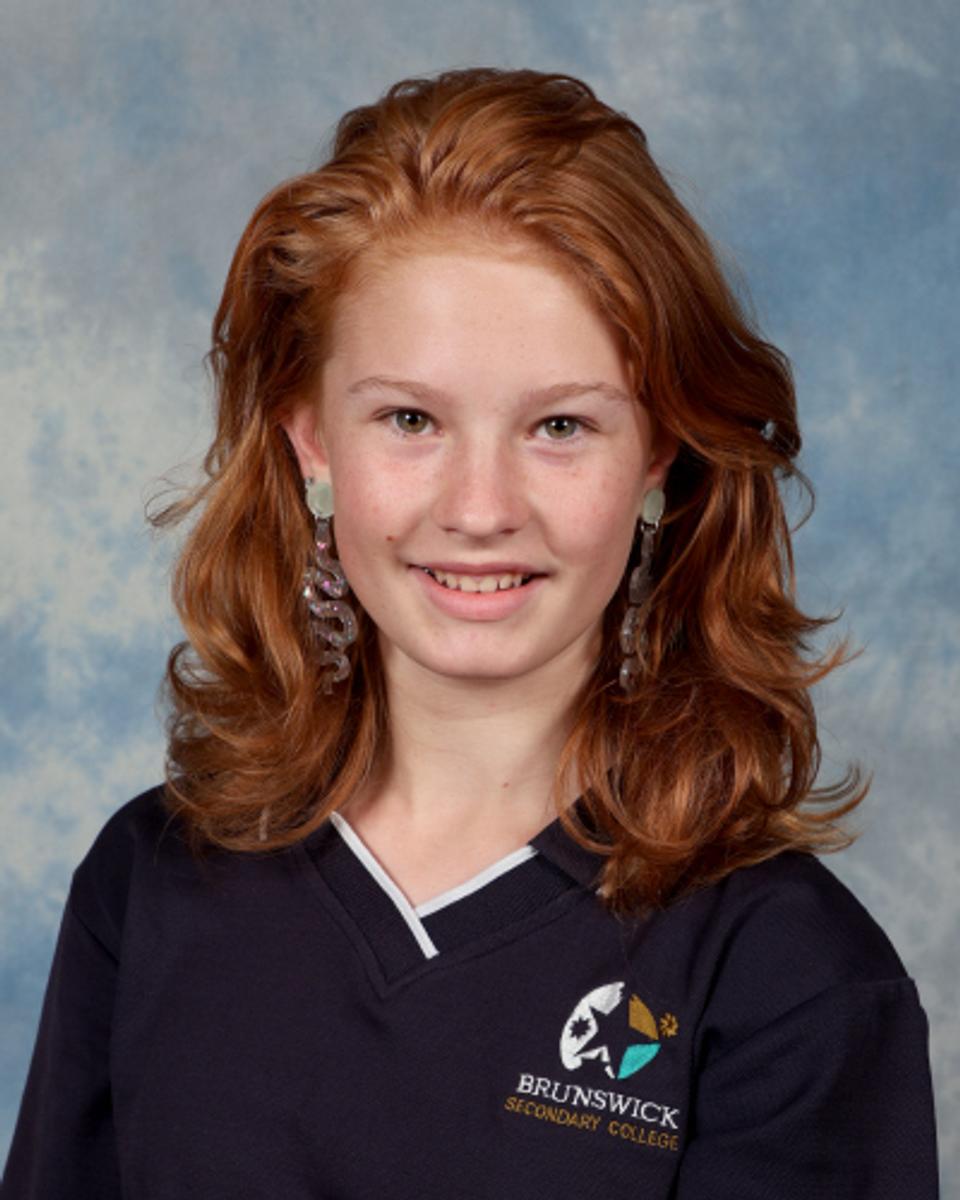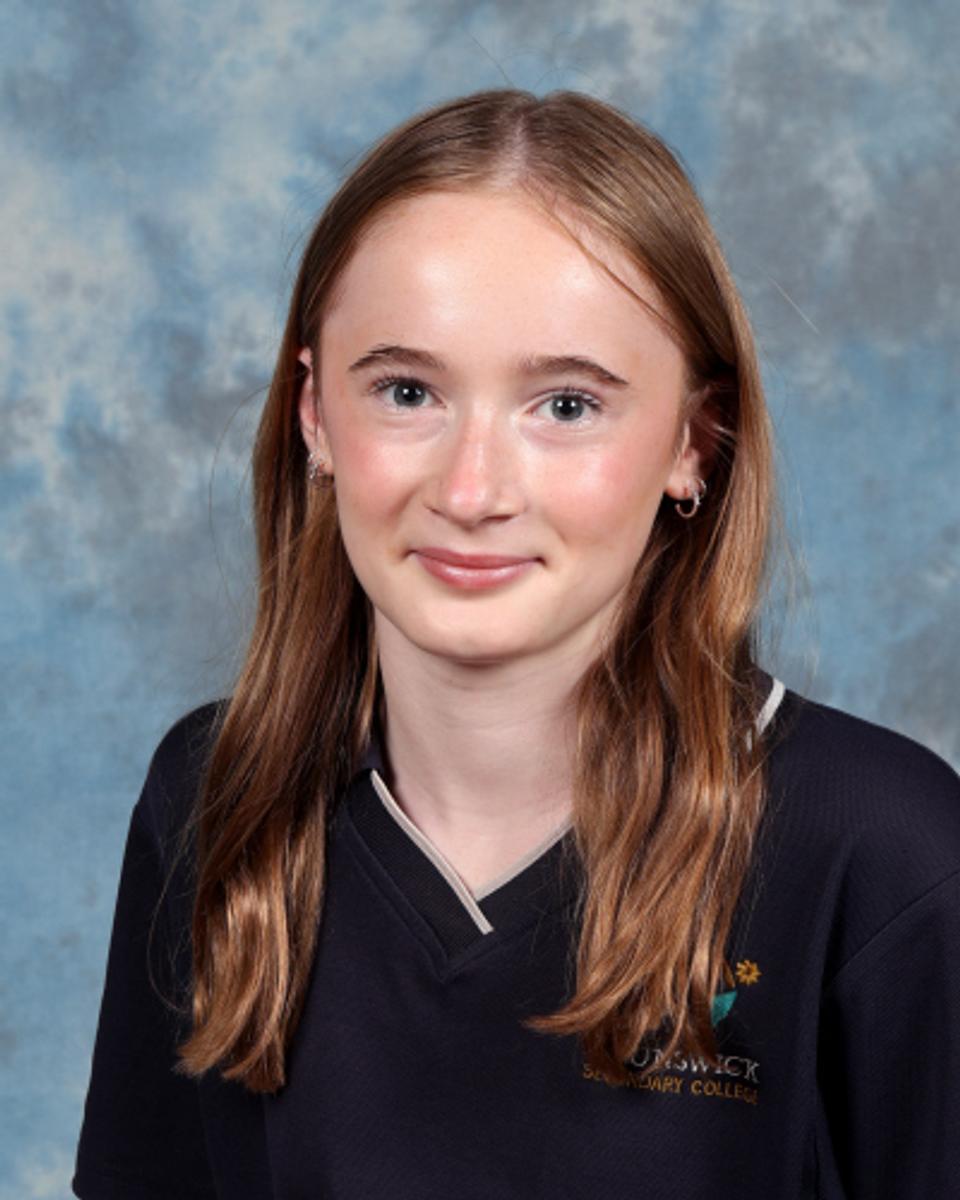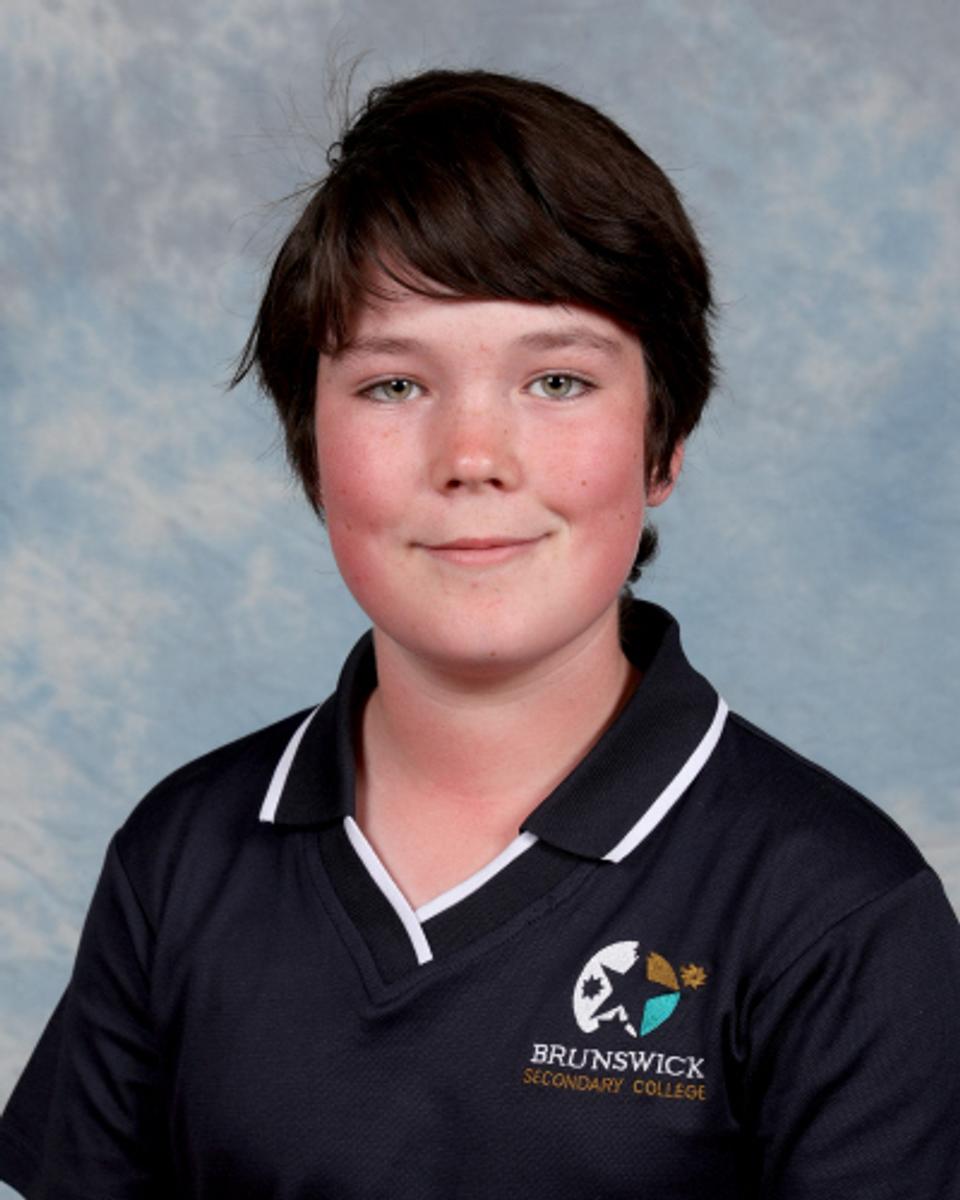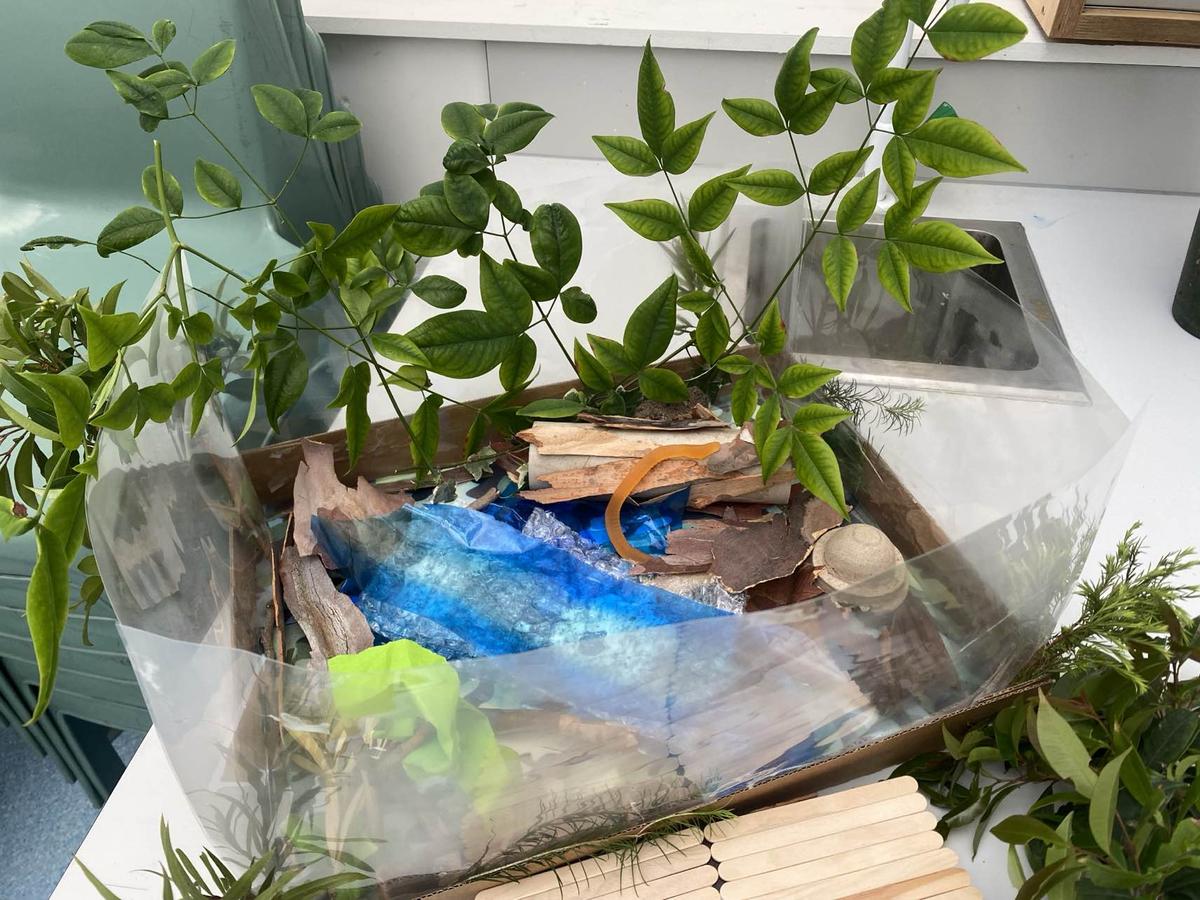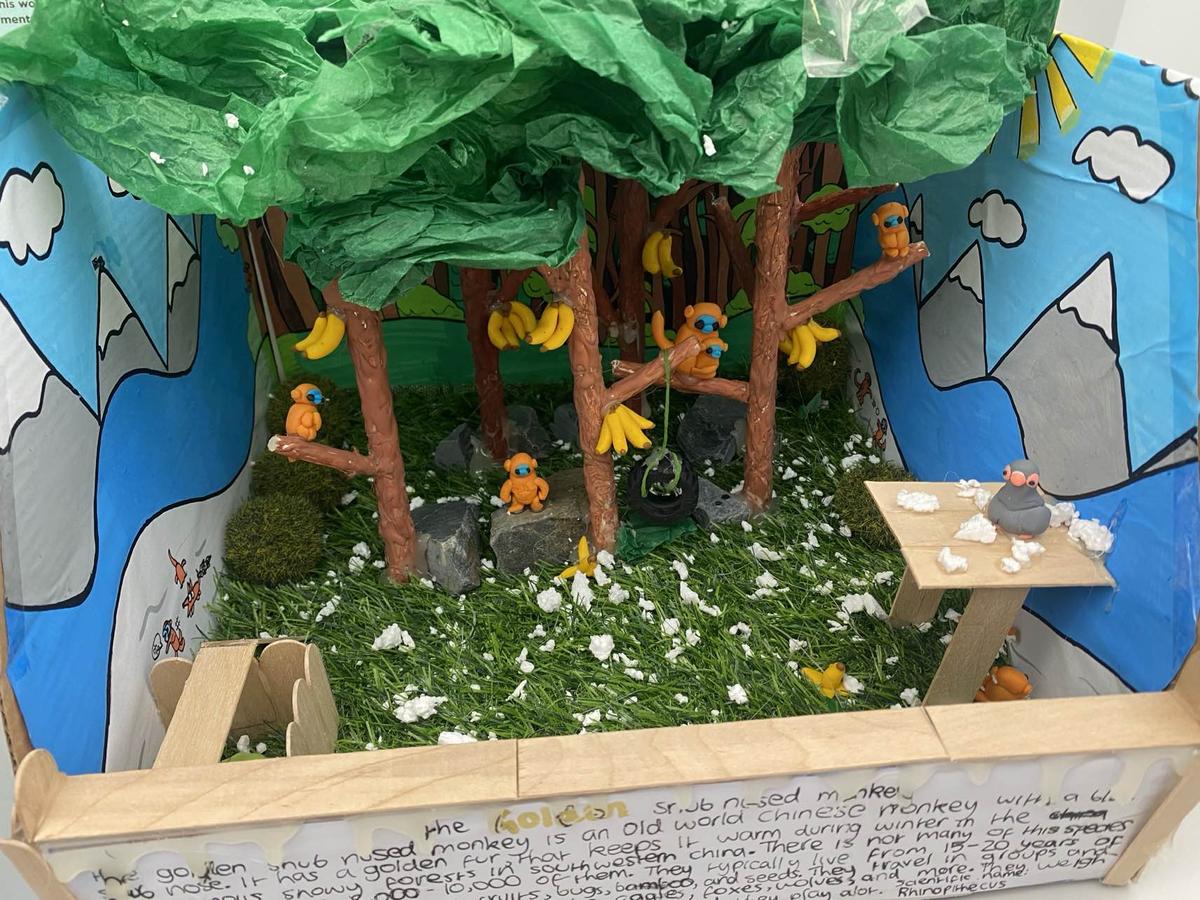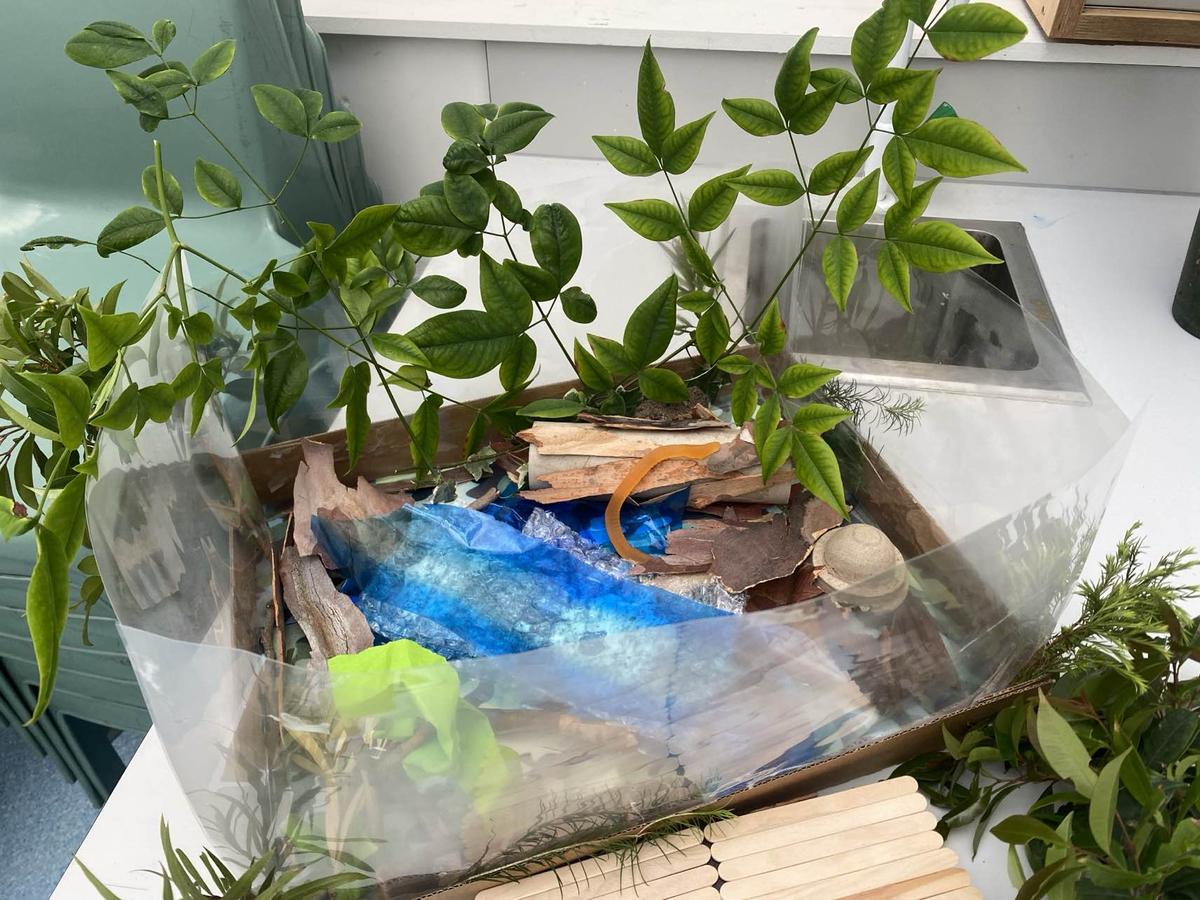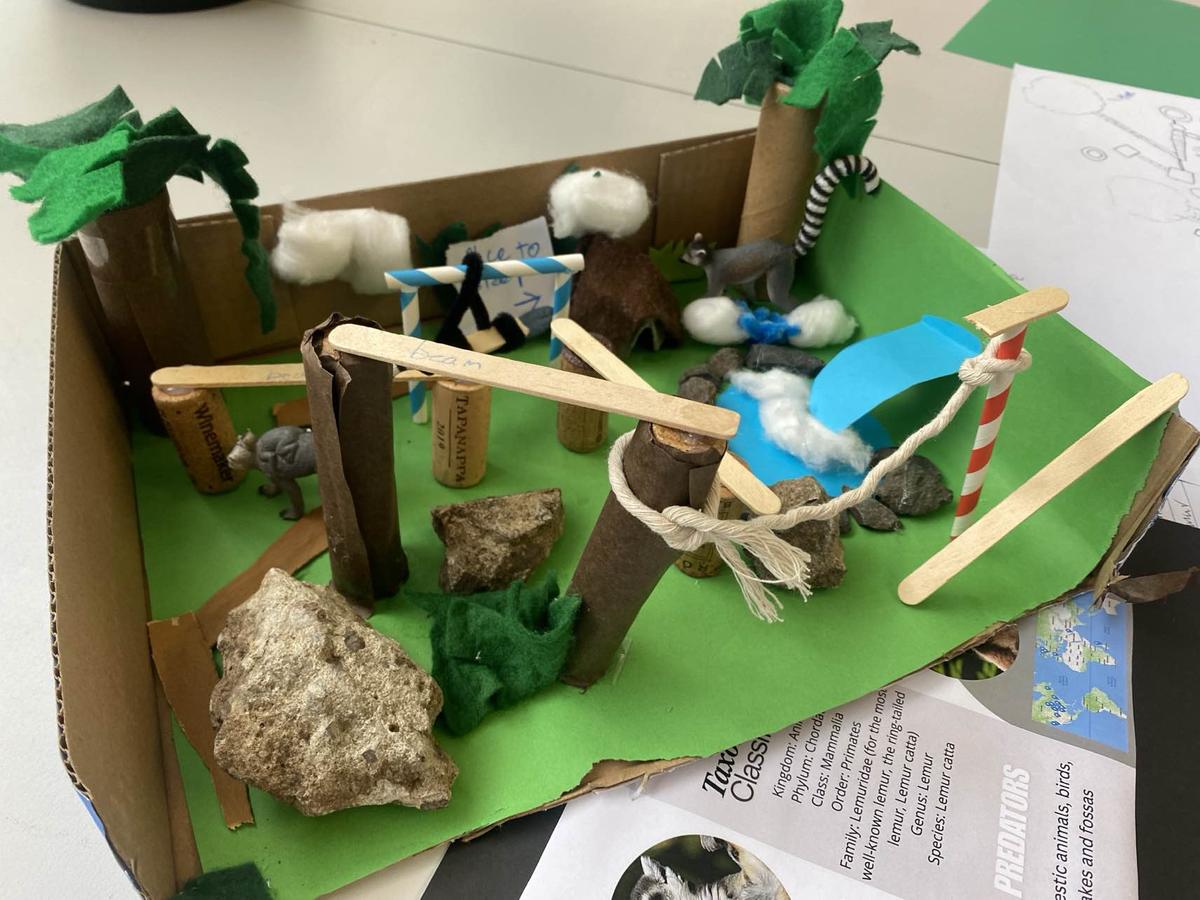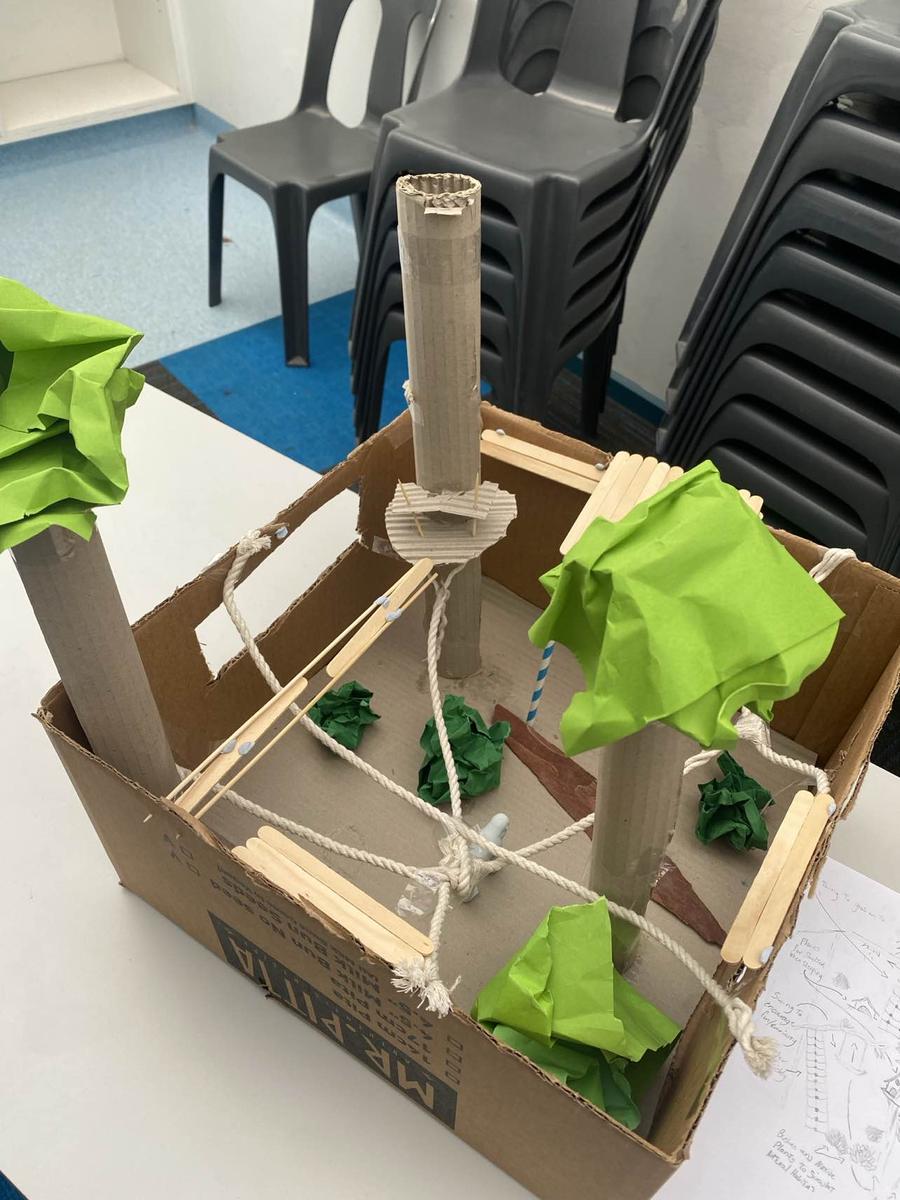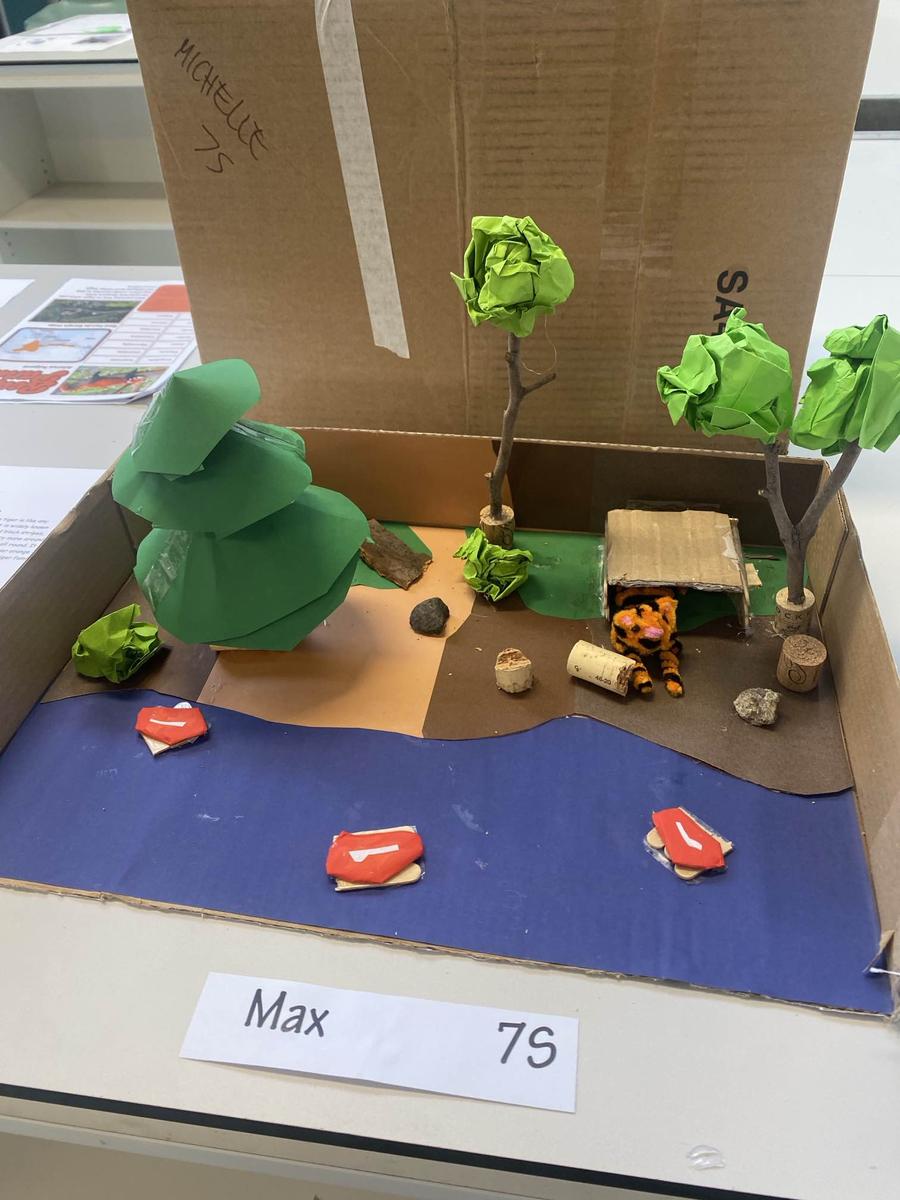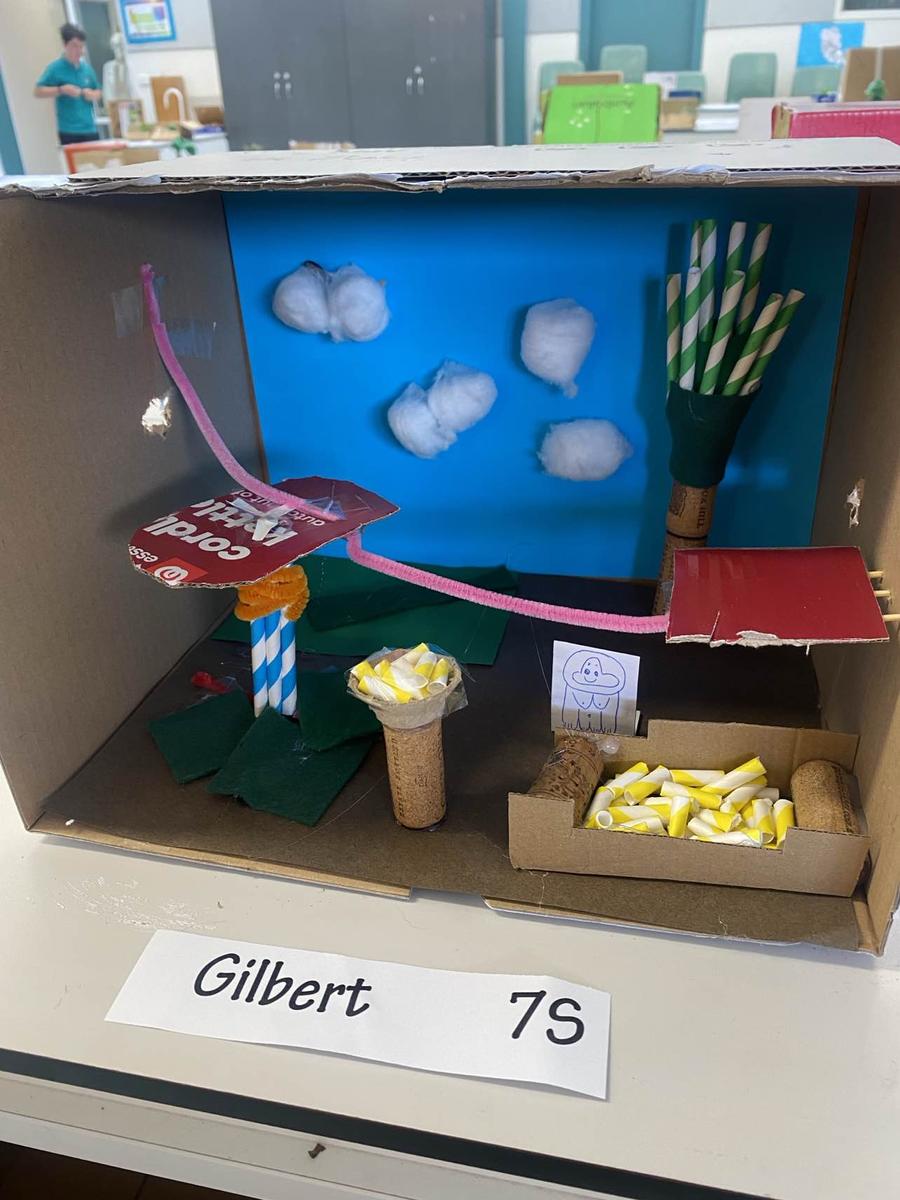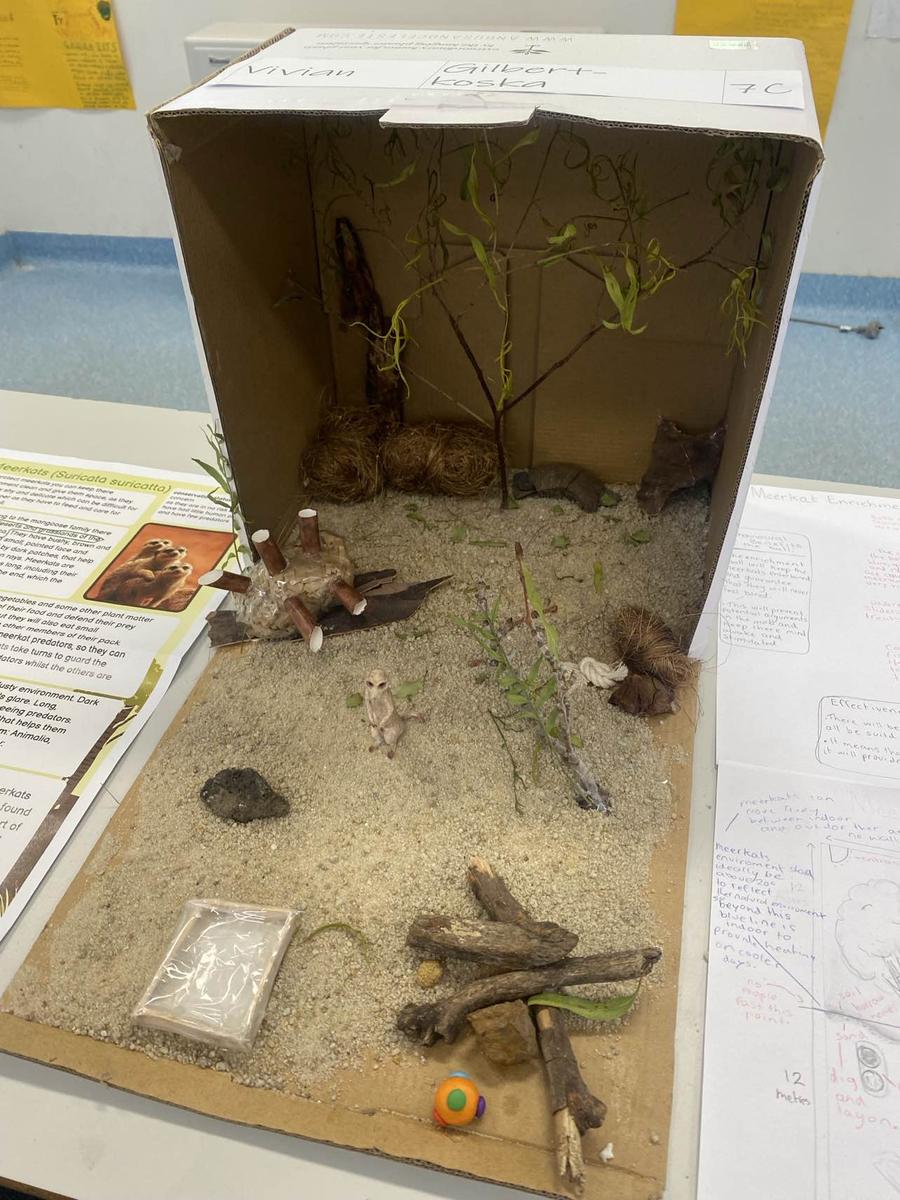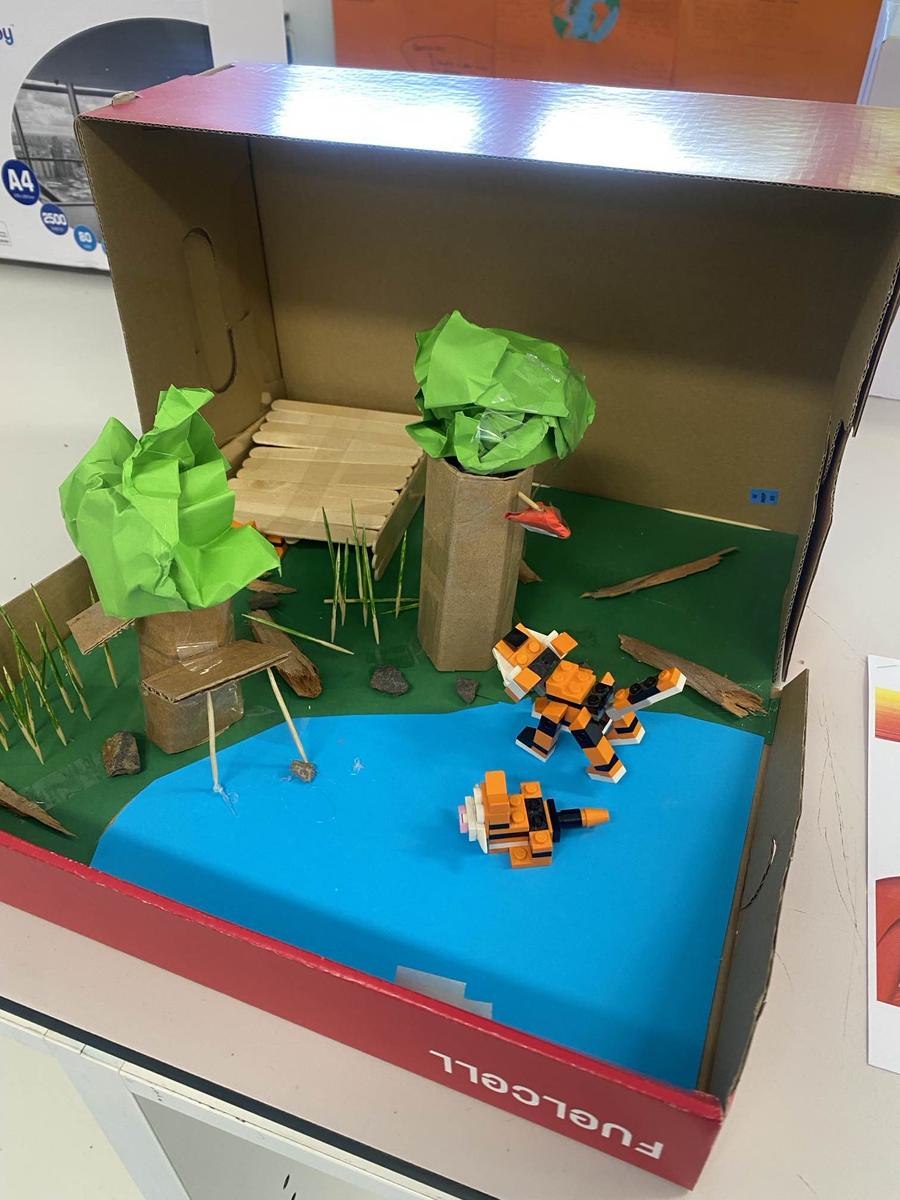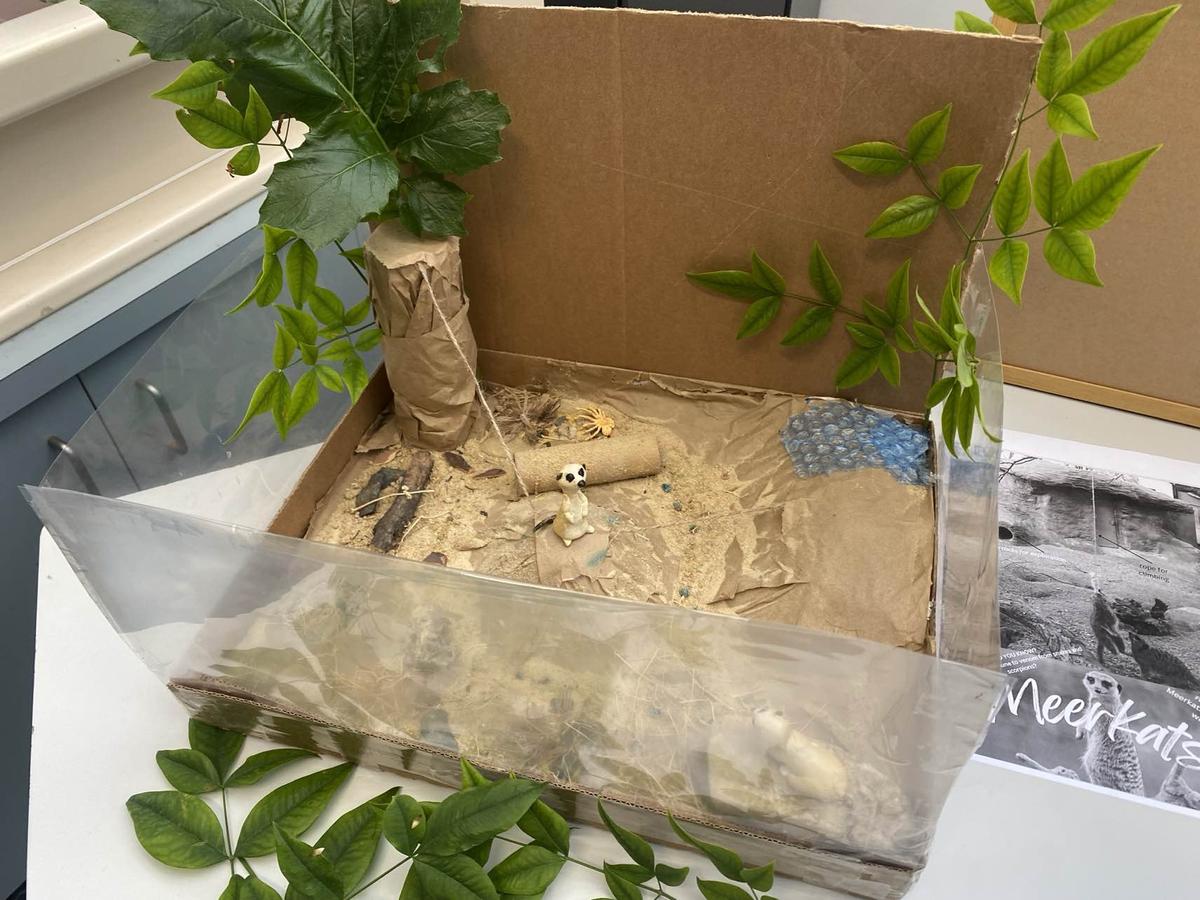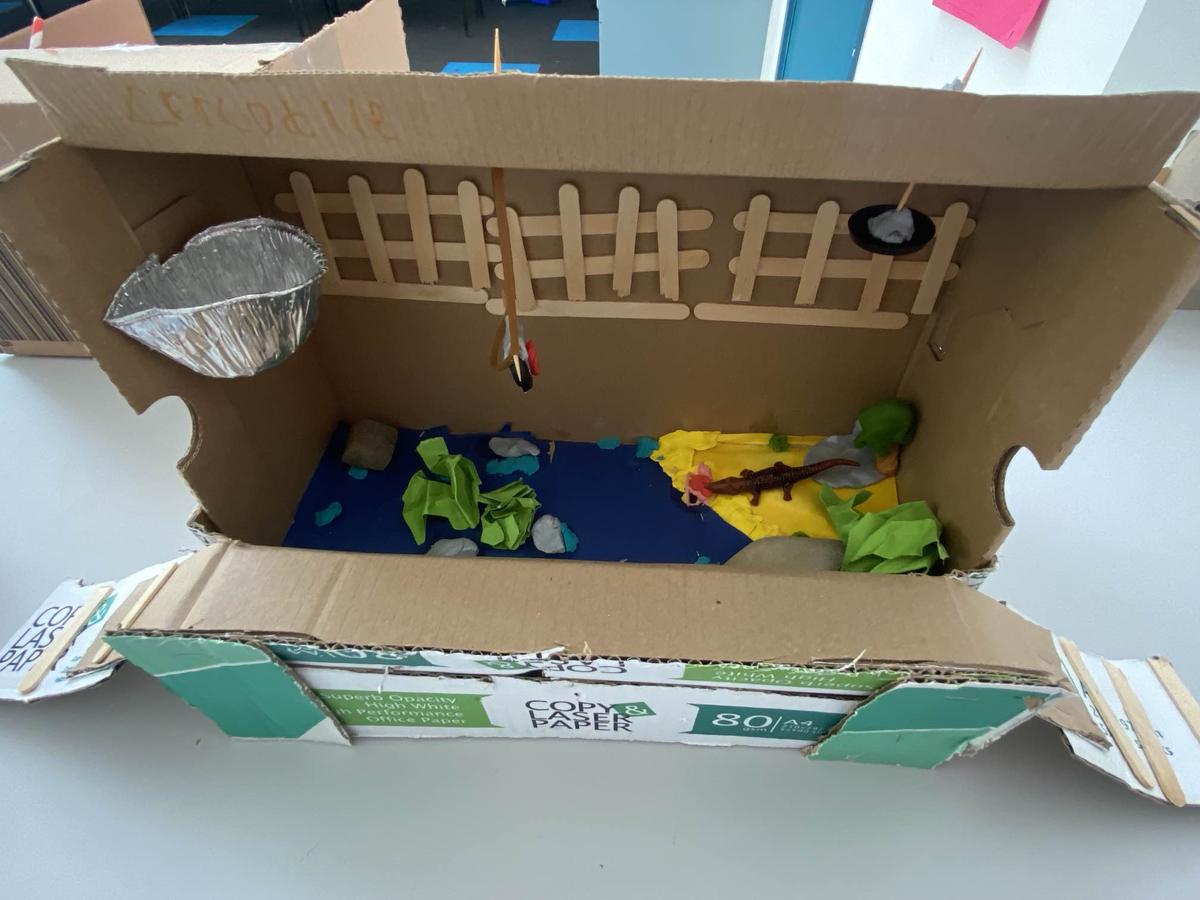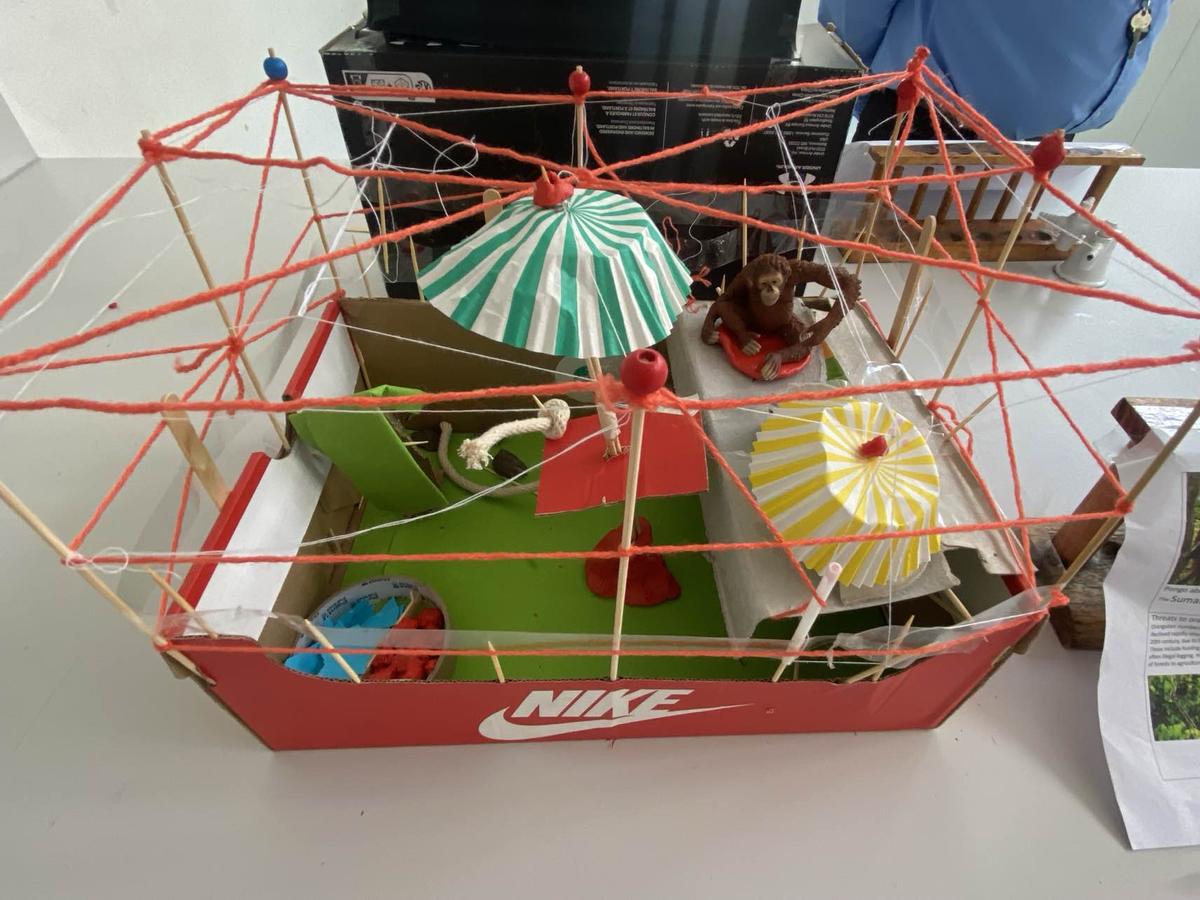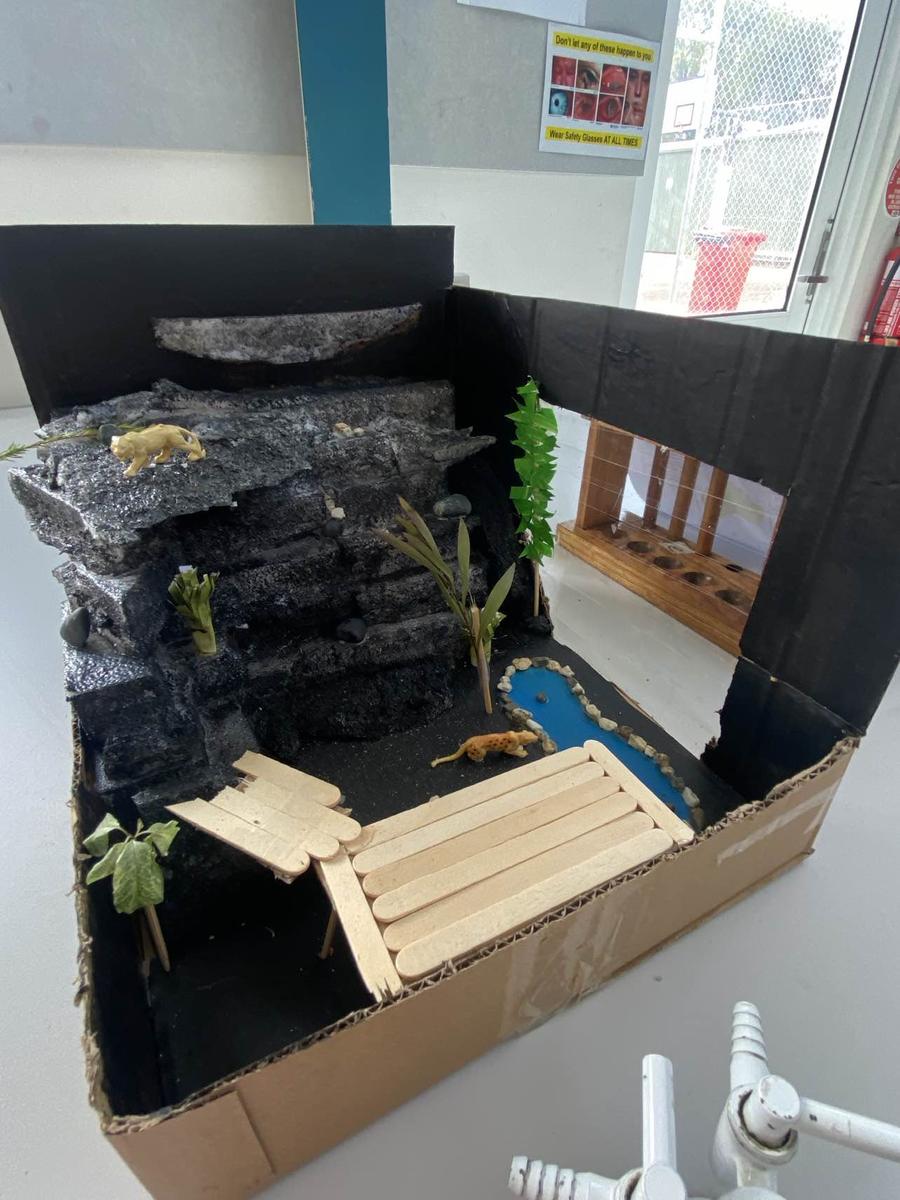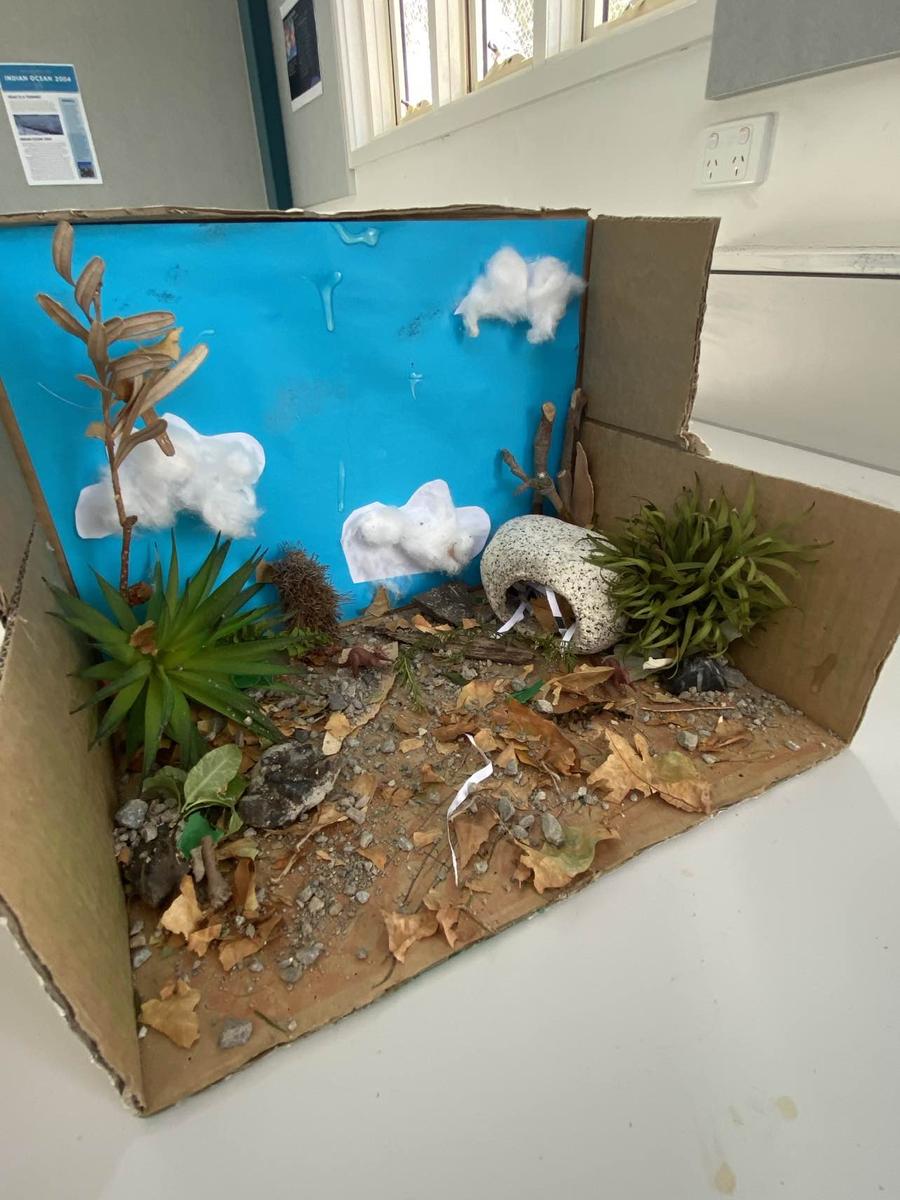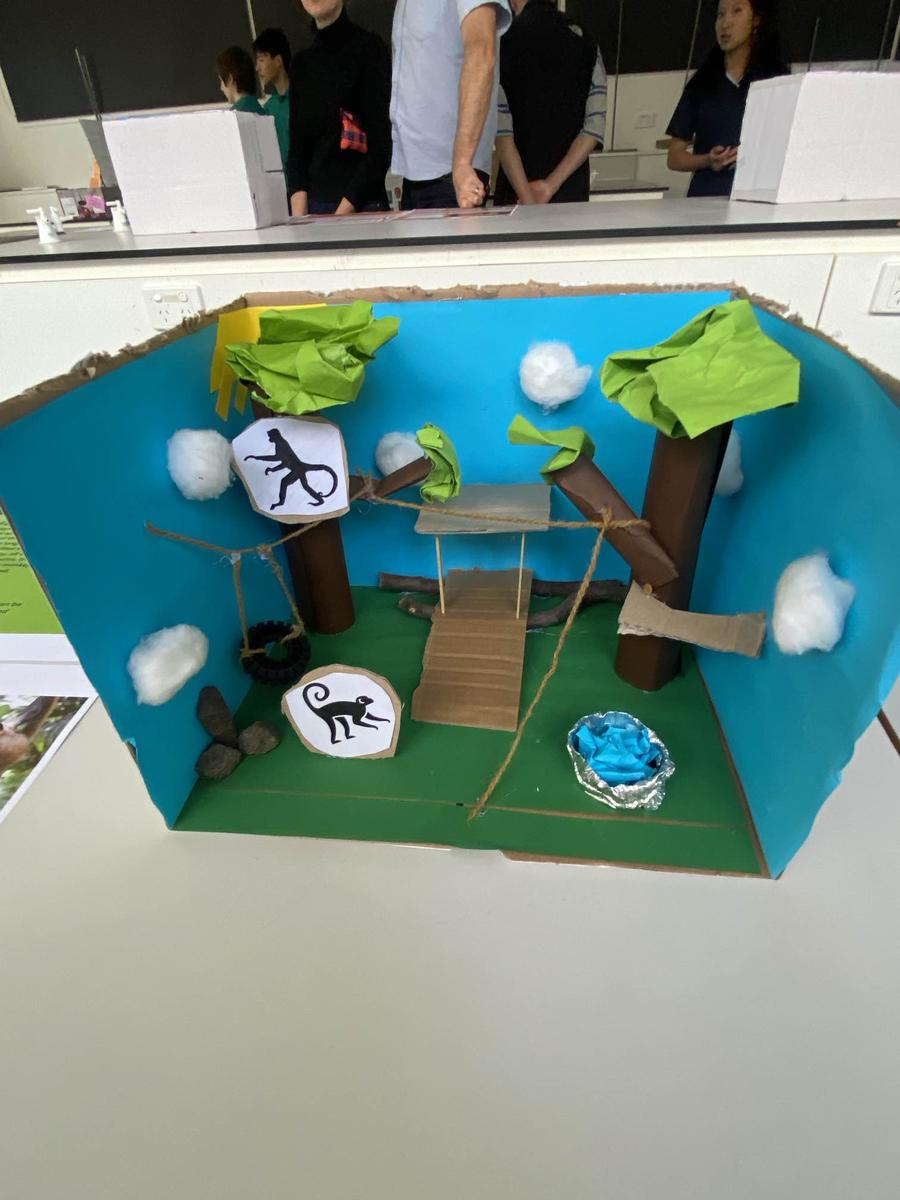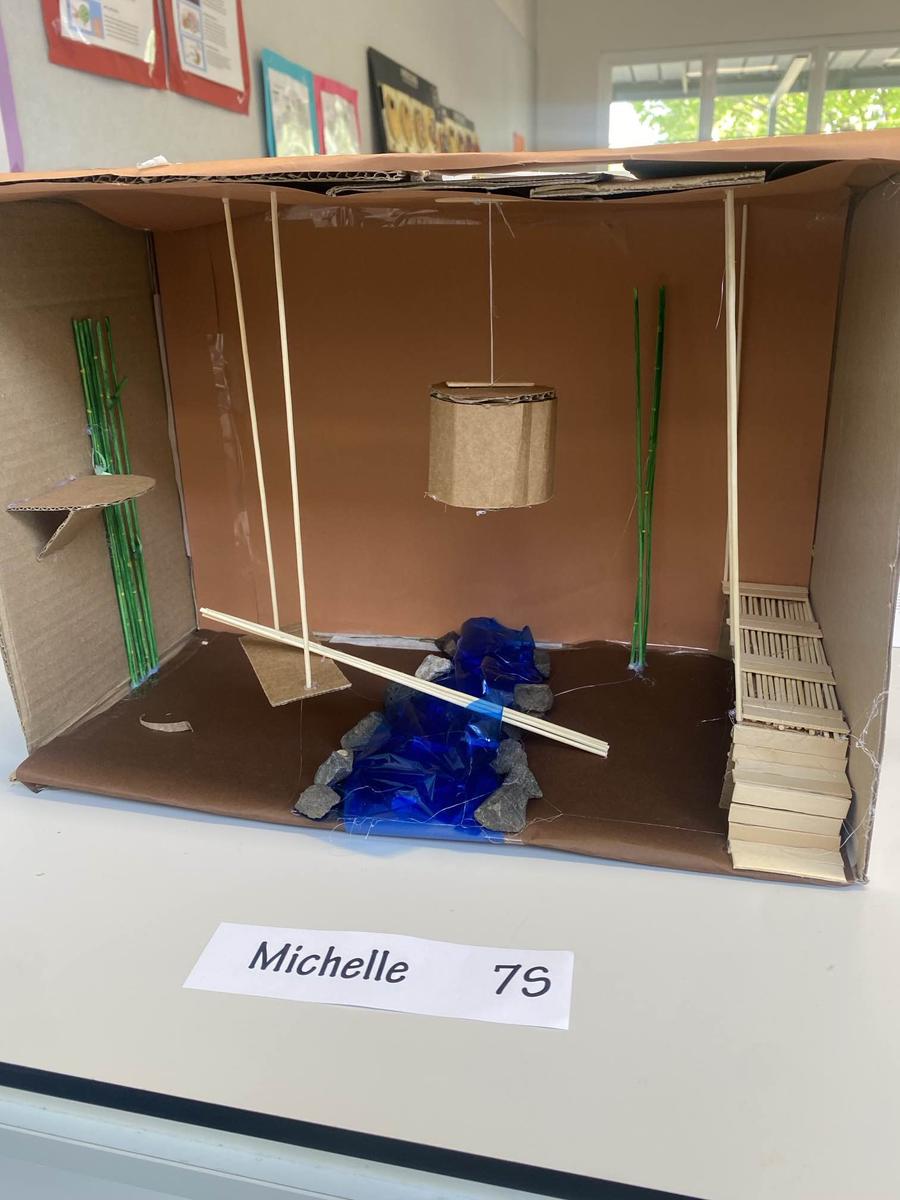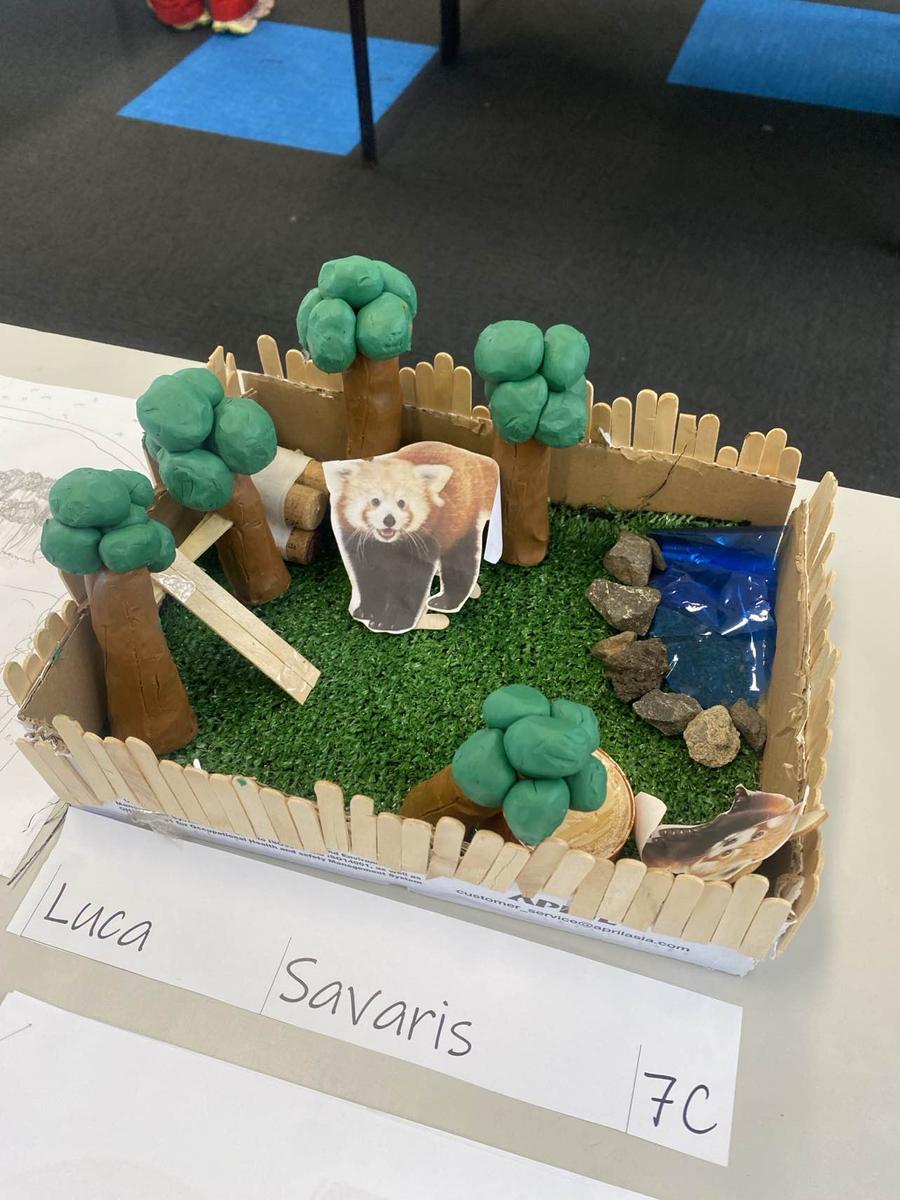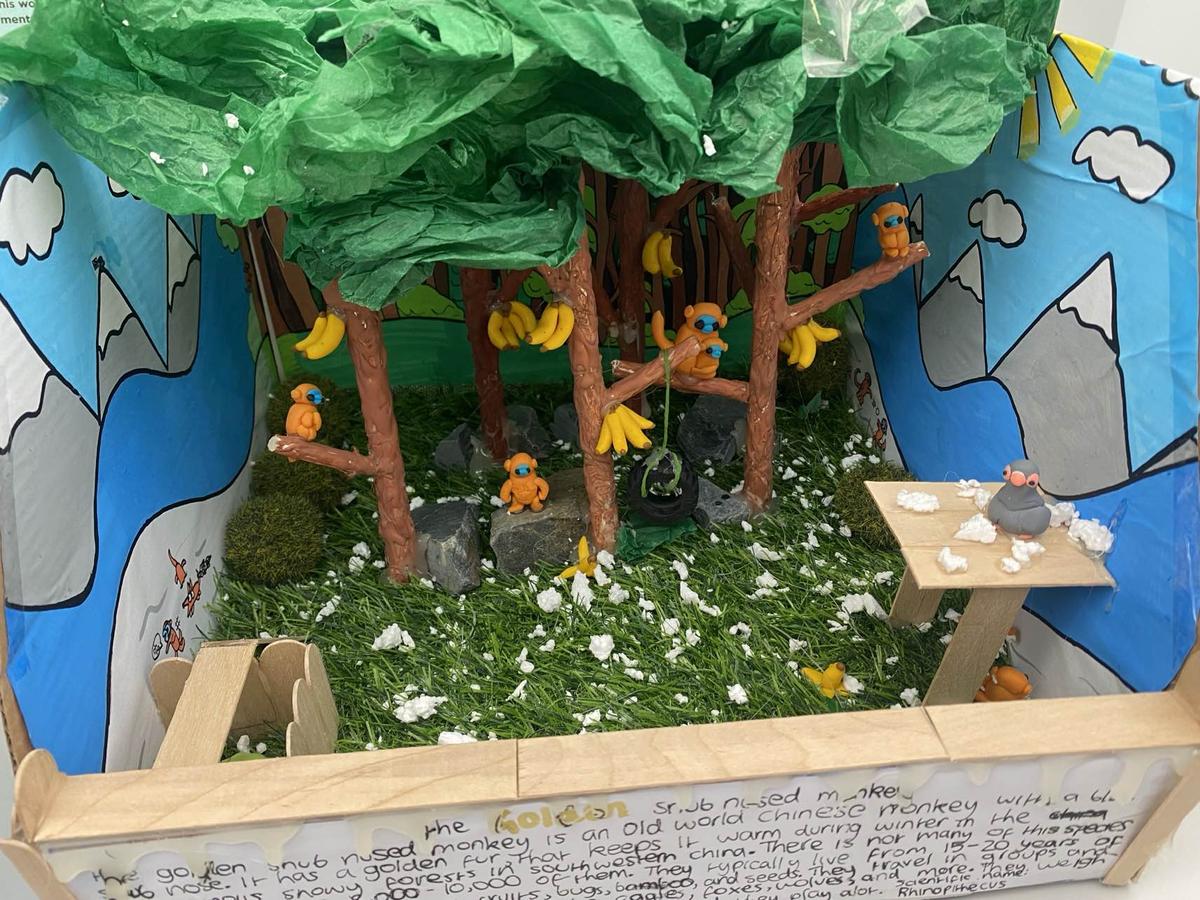Biologically Speaking....
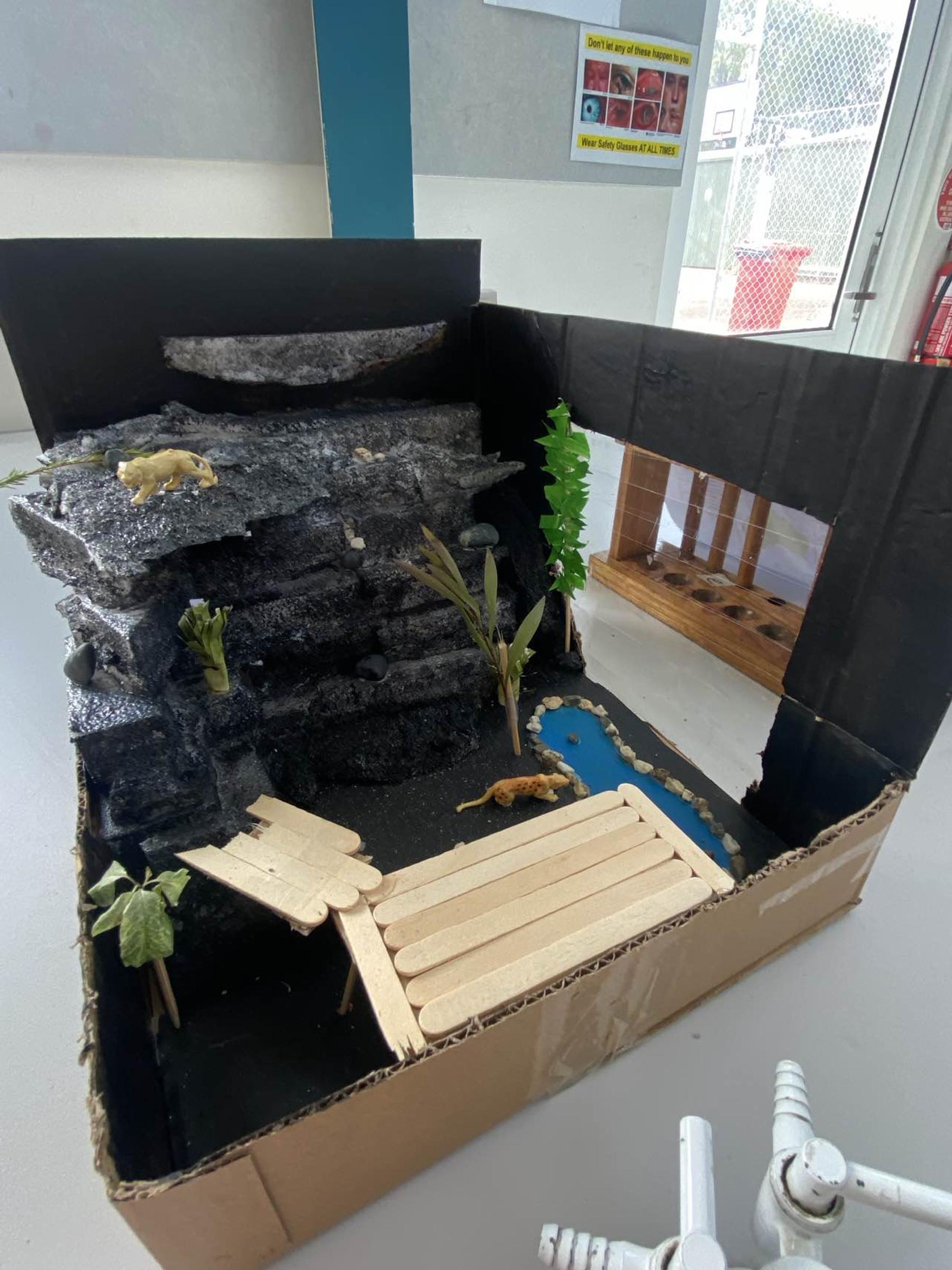
Vernon Clare
Head of Learning - Science
Earlier this term, Year 7 students visited Melbourne Zoo as part of their biology assessment.
Students were tasked with assessing the attributes and adaptions that their (chosen) animal exhibit, and that have allowed the animal to survive in the wild. They also had to examine how the zoo had designed enclosures to match the characteristics and needs of the animal.
Students were then asked to build dioramas to display the ideal enclosure design for their animal. Parents and carers were invited to come and view the dioramas on display at the school.
Michelle di Gennaro
Year 7
My zoo enclosure for a red panda has a black area for [the panda] to lie in and a river flowing through the middle so that it has access to water.
I was originally going to do multiple trees but I didn't have enough time, so there are only a few bamboo trees. It has full shelter as apparently [pandas] need an enclosure to be 75% shade. It has a ledge to climb on and a swing above the river which also works as a bridge.
I recently went to the zoo in Japan [where] there was a red panda enclosure and they had a lot of climbing space.
I liked the freedom of being able to pick your own animal, research it and then make your own enclosure.
Polly Billing & Eloise Santo
Year 7
We chose Emperor Tamarin, Meerkat and Lemur. They were all together in one enclosure, so we have the bottom story for the Meerkats and the top story with trees and ramps for the Lemurs and Tamarins.
The animals [would be able to] move between the different places.
The kind of monkeys like the tamarins and the lemur are very similar, and the Meerkats aren't very aggressive so they'd be able to get along very well.
I think we learned a lot about the animals, what they do, and what they need to live comfortably. Making the dioramas was a lot more creative than just writing report.
Isaac Batten
Year 7
I created a diorama of an enclosure for Emus. I learned about their diet and how they're omnivorous. I thought they were only plant eaters at first but they also eat some insects.
Emus need a lot of space to run because they are large birds and like to run to find lots of food, so they need a big range.
Making dioramas was fun but also very difficult to do, because there's lots of components. I used popsicle sticks to make fences and a raised platform for viewing. I used rubber bands and split-pin coloured blue to make a nest as well as various bits of bark and leaves to make trees. This project was fun!


